When spathiphyllum leaves turn yellow, it is very sad. A healthy plant pleases the eye with lush bright green foliage and delicate white flowers resembling callas. Spathiphyllum is called “female happiness”, and it is generally accepted that in the house where he grows, conflicts less often occur, coziness and comfort always reign.
Material Content:
Spathiphyllum, leaves turn yellow - natural causes
Leaves may turn yellow due to natural aging. If one bottom leaf withered, and the whole plant feels good, nothing needs to be done.
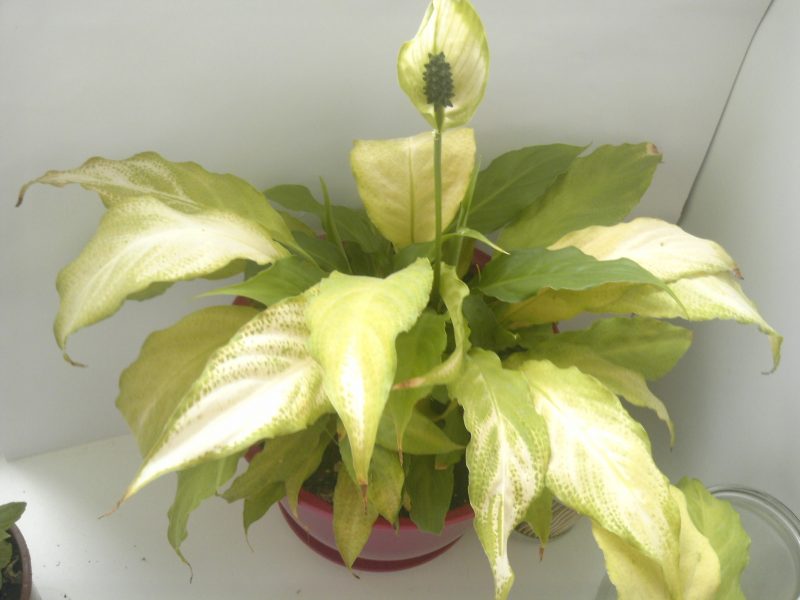
It happens that the leaves of spathiphyllum begin to turn yellow in the center or their tips dry.
This may result in:
- root cooling, if the plant stands on a cold windowsill in winter;
- chemical burn with fertilizers;
- improper watering;
- lack of trace elements in the soil.
Withered leaves are carefully cut. If their yellowing is caused by improper care - correct errors.
Why spathiphyllum leaves turn yellow - mistakes in care
The unpretentious spathiphyllum plant with improper care can cause many problems to its owner.
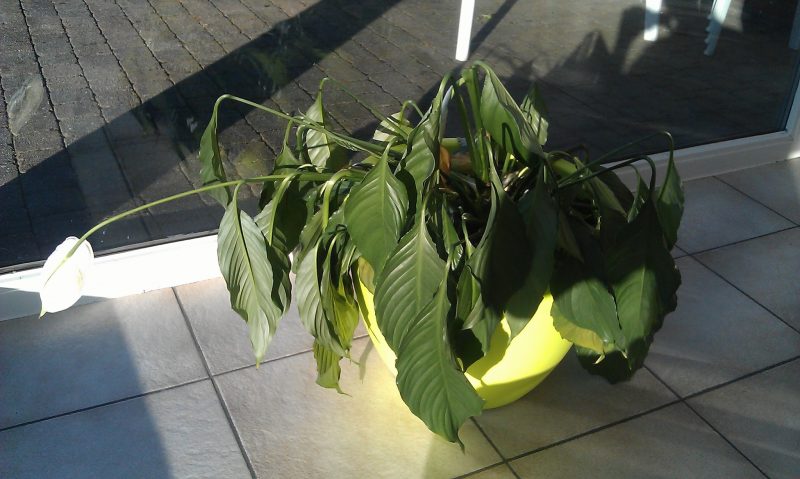
Errors in care are primarily reflected in the leaves, which begin to turn yellow and fade.
Several causes that can lead to plant disease and yellowing of its leaves are easy to fix.
- Inadequate watering, drying out of the earth in a flower pot - water the flower abundantly with warm, defended water.
- The old soil, the plant has not been transplanted for a long time - transplanted into a pot a little larger in volume, with fresh soil.
- Too plentiful watering, leading to rotting of the roots - transplant the plant, rinse and trim rotted roots.
- Low humidity or close proximity to a radiator in the winter are the main causes of yellow leaf tips. They are easy to fix by spraying the flower twice a day.
- Sunburn from direct sunlight - it is necessary to shade the plant at noon or transfer it to a less sunny window sill.
- The lack of trace elements, chlorosis - regularly fertilize.
Withering of leaves can also be caused by the activity of harmful insects or too low air temperature in the room.
Trace deficiency - how to fix it?
The lack of trace elements is manifested in the uneven yellowing of the leaves. With chlorosis - a lack of iron - the leaf veins remain green, and he turns yellow. Other forms of yellowing may indicate a lack of calcium or boron. You can fix the problem with regular dressing and transplanting into nutrient soil.
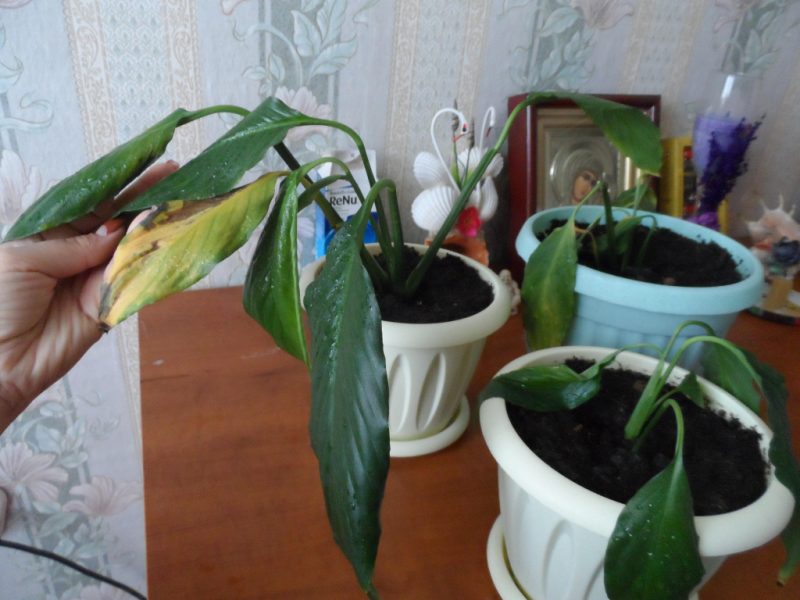
With chlorosis, the plant must be sprayed with iron chelate. Two weeks after transplantation, feed with complex fertilizer for Aroid.
Spathiphyllum well perceives not only root, but also foliar application.
For better development of the plant, together with mineral or organic top dressing, you can use the growth stimulator "Epin".
Pests and diseases of spathiphyllum - how to treat?
Spathiphyllum is most often affected by a spider mite, thrips and mealybug. At the first suspicion of pests, the plant is sprayed or watered with special preparations.
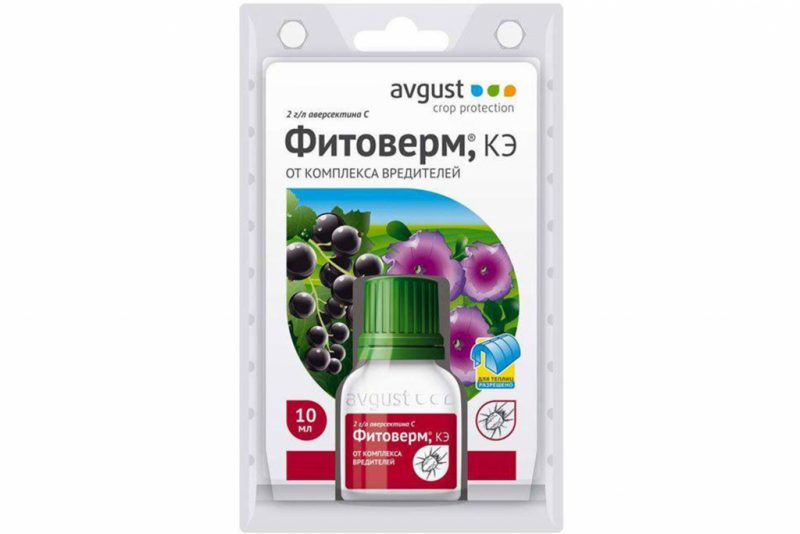
- In the fight against thrips, non-nicotinoids are effective - “Dantol”, “Ponche”, “Mospilan”. For 1 liter of water, 1 g of the drug is diluted and the plants are watered once a week for three consecutive weeks.
- The mealybug can be destroyed on the plant with any insecticide. Popular drugs: Calypso, Aktara, Fitoverm. Treatments are carried out during the month 1 time per week.
- Against a spider mite, the drug "Actellik" is effective. It is sprayed once every two weeks, spraying the flower in the open air. You can also use Neoron, Flumipe, Skelpa.
If the roots rot from the overflow, the leaves of the spathiphyllum begin to blacken. It is necessary to remove the plant from the ground, rinse the roots in water and cut damaged, rotted roots with sharp scissors. Slices should be crushed with charcoal, transplanted into a new soil with good drainage and pour fungicide solution to prevent the formation of root rot.
Plant Care Recommendations
Spathiphyllum can be attributed to unpretentious flowers.
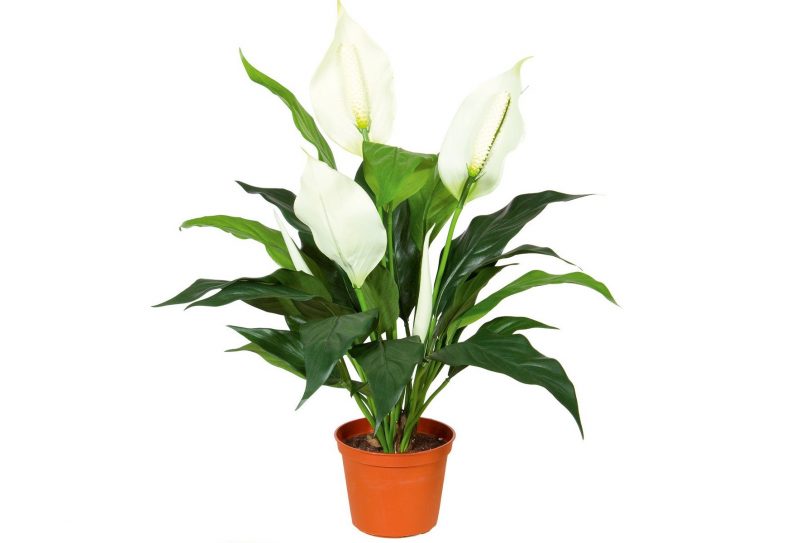
Knowing the features of its cultivation, it is easy to get a beautiful and strong plant:
- The flower does not like strong waterlogging, before watering the top layer of soil should dry by 3-5 cm.
- Water for irrigation should be at room temperature, spring or passed through a filter.
- It is advisable to transplant the plant annually, updating the soil and slightly increasing the volume of the landing capacity.
- Fertilize in spring and summer with universal fertilizer, you can take "Kemira".
- The leaves of the plant must be regularly cleaned from dust.
- For flowering, spathiphyllum needs good lighting, but it is advisable to avoid direct sunlight, which leads to burns of the leaves.
- Spathiphyllum does not like drafts, you can not even open a window next to the plant for ventilation.
- The optimum temperature in the room for growing is + 18–23 ° C.
In order for the leaves to shine, they can be sprayed with polish for plants or cook it yourself - 1 tbsp. milk mixed with 1.5 tbsp. water.
Spathiphyllum is propagated by dividing the bush during spring transplantation, apical cuttings or seeds. For planting, soil is bought at a flower shop or prepared independently from sand, sheet, turf, peat and humus soil in a ratio of 1: 1: 2: 1: 1. At the bottom of the pot must be placed drainage.
Suitable fertilizers
For spathiphyllum, mineral fertilizers are preferable to alternate with organic ones.You can use a weak solution of mullein or bird droppings in a ratio of 1 to 30, as well as organic fertilizers “Garden of Miracles”, “Magic Mixture”, diluting them in warm, settled water according to the instructions.

Well affects the development of the plant drug "Agricola". Before the proposed flowering, the number of dressings can be increased up to 1 time per week. During flowering, the drug "Uniflor-bud" or "Kemira Lux" is suitable.












